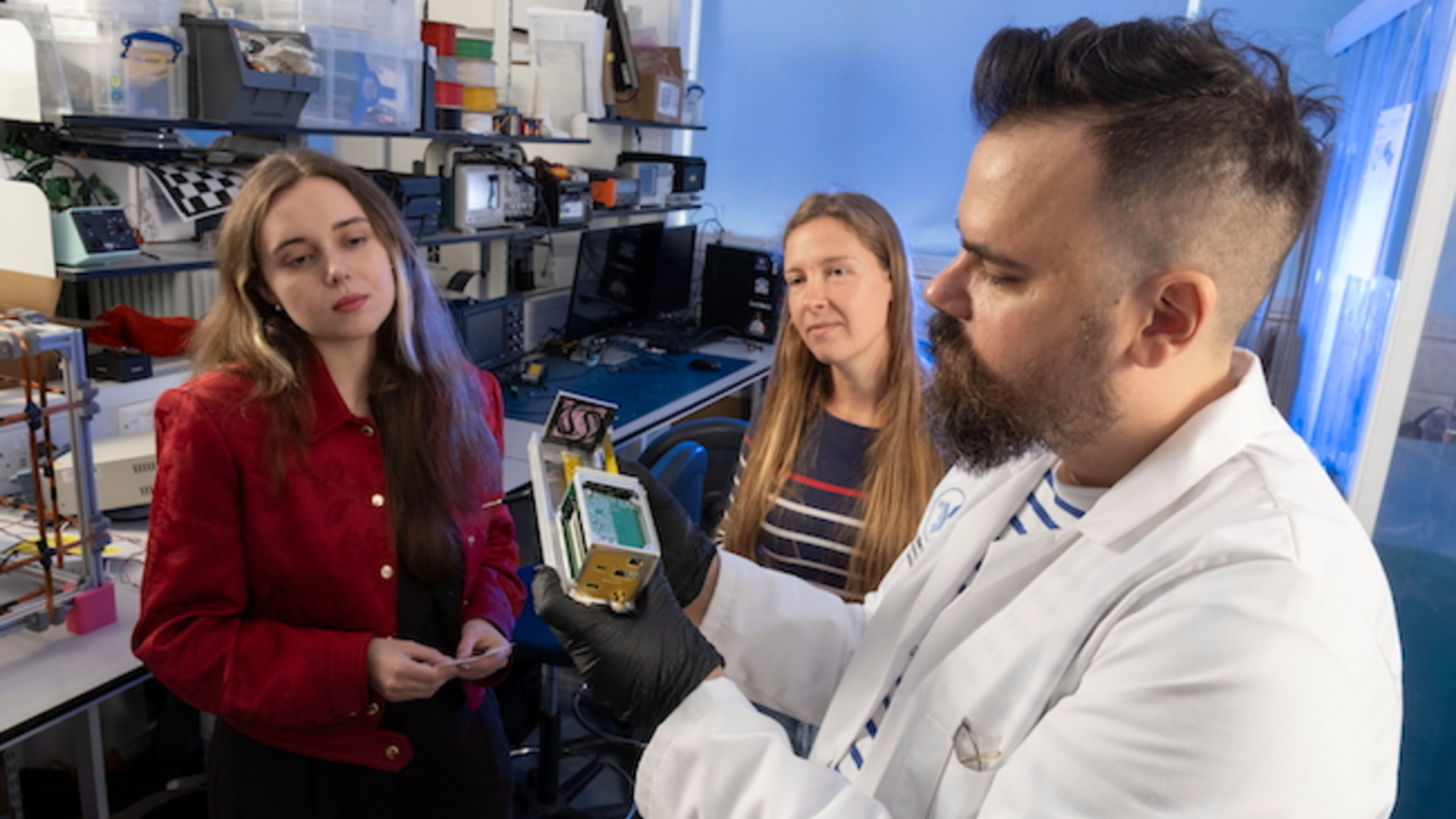Astronomershave found evidence of buckyballs - carbon molecules shaped like soccer balls- in the nebula around a distant white dwarf star. The discovery marksthe largest molecules known to exist in space.
Normallyfound in chemistry labs, where they are made by vaporizing graphite in thepresence of helium, buckyballs were long suspected toform inside stars.
"Assoon as they were discovered in the lab it was actually suggested they would bevery good candidates to be found in space," astronomer Jan Cami of the University of Western Ontario, who led the newstudy, told SPACE.com.
Elusivebuckyballs
Researchershad searched for buckyballs before in the gas anddust between and around stars, but the evidence was inconclusive. Cami and his colleagues identified buckyballmolecules, known as C60 because they are made of 60 carbon atoms each.
The buckyballs are about 1nanometer in size, about three times larger than water molecules, which areabout 0.3 nanometers in size and consist of three atoms (one oxygen atom andtwo hydrogen atoms). One nanometer is a billionth of a meter, or about oneten-thousandth the diameter of a human hair.
Thebuckyball molecules were discovered in the planetary nebula Tc-1, which is about 6,500 light-yearsaway in the southern constellation Ara. Despite theirname, planetary nebulas are actually clouds of gas around stars, not planets.
Breaking space news, the latest updates on rocket launches, skywatching events and more!
"Whatwe see is a very clean and very recognizable fingerprint for only twospecies," Cami said - C60 and a closely related molecule called C70, made of 70 carbon atoms. BothC60 and C70 belong to a class of molecules termed buckminsterfullerenes,or just fullerenes, after architect Buckminster Fuller.
Togetherthe two fullerenes make up about 3 percent of the available carbon around thestar, the researchers reported.
Tc-1contains what is known as an asymptotic giant branch (AGB) star. The innerregions of these stars have become dense, dim stars called white dwarfs, whiletheir outer stellar envelopes have sloughed off. The resulting cloud of shedlayers undergoes chemical reactions and is ionized by radiation from the innerwhite dwarf, creating a planetary nebula that will eventually become part ofthe interstellar medium.
Largemolecules in space
Thenew finding came when a colleague of Cami's waslooking at infrared data from the Spitzer Space Telescope. Every molecule inspace soaks up infrared light at a unique set of wavelengths, resulting in akind of chemical fingerprint.
"Hehad this one object that looked very strange to him," Camisaid. "The spectrum didn't look quite like anything he had seen before."
Normallythe nebula around an AGB star will contain hydrogen, which inhibits the reactionthat produces fullerenes, and also tends to obscure any signal from themolecules.
Theresearchers think C60 and C70 were able to form on sooty dust grains becausethe Tc-1 nebula lacked hydrogen gas.
Basedon the observed temperature of the fullerenes, they estimate that the moleculesformed within the past 100 years and would likely be undetectable in another100 years.
Thefinding "shows that complex, large molecules can exist in space,"said astrophysicist Theodore Snow of the University of Colorado in Boulder, whowas not involved in the research. "Buckyballsare very stable and resistant to interstellar ultraviolet radiation, so onceformed they can have long lifetimes in space."
Theresearchers detailed their findings in the July 23 issue of the journal Science.
- Images: Amazing Nebulas
- Vote: The Strangest Things in Space
- Images: Nebulas from Kitt Peak
J.R. Minkel covered space, physics, cosmology and technology for Space.com, Live Science, New Scientist, Popular Science, Discover, and Scientific American, all while writing his own blog A Fistful of Science and authoring a book entitled The Instant Egghead Guide: The Universe. Minkel earned a master's degree in Science and Environmental Reporting from New York University and a B.S. in Molecular Biology from Vanderbilt University, where he dabbled in zebrafish genetics.
